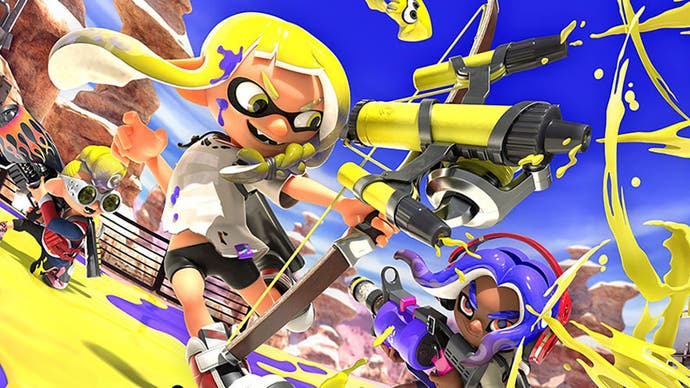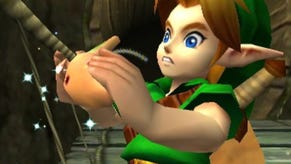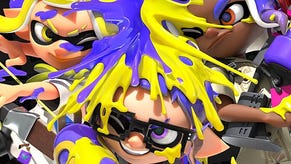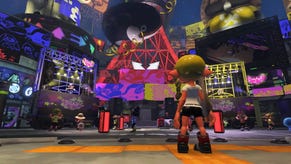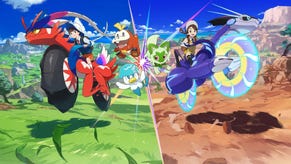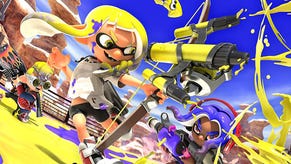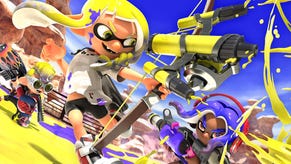Splatoon 3 hones and refines the series to new heights
The Digital Foundry tech review.
Whether a game console is a smash hit or an abject failure, I find myself drawn to all of them - and typically there's at least one killer game you have to play. Nintendo's Wii U arguably fits into the latter category, despite the fact that the system actually has a bunch of exceptional releases - and one of those titles is the original Splatoon, effectively Nintendo's take on the third-person shooter genre with its own unique twist, the paint system. It's a game that oozes style, kind of like Nintendo's take on a classic Dreamcast game - and it's brilliant.
Like many Wii U titles, Splatoon hit Switch via a sequel: familiar in many ways, but fleshed out with a more comprehensive single-player offering and the excellent Octo expansion. Five years on, the third instalment is here - and there are plenty of changes and improvements to consider. I liked Splatoon 2, but this new release feels like a proper sequel, improving on the series' strengths and moving in new directions. The presentation instantly feels more elaborate, the single-player mode is vast and the visuals have improved. It feels like the game Nintendo has been working towards since the very beginning.
That starts with your first contact with the game - a basic menu on the Wii U original with more polish on the sequel with a title sequence leading into the training sequence. Splatoon 3 makes far more of an impact, with a mysterious desert scene instantly setting the stage for what's to come. The camera then cuts to your character with a more fully fleshed-out, animation rich character customisation sequence. It then seamlessly pans over to the starting point before kicking into the training mission.
This initial stage, though simple, reveals some nice improvements to the visuals - specifically, the precalculated lighting. We're not looking at any fancy new global illumination techniques here, but look closely and it feels as if the developers have done a surprisingly good job in simulating the appearance of diffuse interreflection - basically, the light from the sun that bounces around a scene, triggering colour bleeding in the process. It's entirely missing in the original release and makes a profound difference here.
When you eventually complete the training, you're dropped out into the game's hub. The original Splatoon and its sequel place you into different parts of Inkopolis but each square is similar in terms of size and scope. It's a relatively small area running at 30 frames per second with an increase in resolution and detail. It's here where you access all the different modes and shops. Splatoon 3 shakes this up sending the player to Splatsville - the city of chaos. Ultimately, it functions much the same as prior games, but the visual fidelity and size has greatly increased. The hub is roughly four times larger than either Inkopolis hub and there's more to discover throughout including, by the way, the option to recon the main maps rather than being limited to whatever is current rotation is.
In the video embedded on this page, I've included a bunch of comparisons between the three Splatoon titles, showing the gradual evolution of the series in terms of its visual make-up - it's not something that text can truly convey, but essentially, what we're seeing here is growing ability and confidence from the development team, who've always had to work with less than state-of-the-art hardware. In this scenario, ideas and talent go a long way.
On the topic of resource-constrained hardware, let's talk about basic image quality and the use of dynamic resolution scaling and AMD's FidelityFX Super Resolution 1.0 in Splatoon 3. Resolution-wise, it's pretty simple - Splatoon tops out at native 1080p using dynamic resolution scaling to ensure smooth performance. It seems to bottom out around 820p in docked mode. Portable mode tops out at 720p while DRS can see drops roughly to 540p or so. However, resolution manages to reach its maximum pixel count more often than you'd expect, meaning that Splatoon 3 is noticeably clearer than your average Switch game as of late.
As for FSR 1.0, it is listed within the licence section on the Switch menu, so it's very likely engaged, but it doesn't really bring much to the table. The thing to keep in mind is that FSR 1.0 is not anti-aliasing - it's a spatial upscaler. Splatoon 3 does not utilise anti-aliasing in any form, so perhaps Nintendo is using this in combination with their DRS algorithm? Either way, I would argue that there's no obvious benefit as the final image looks very much like other Switch games with a similar resolution profile.
Multiplayer access was limited during the review phase, but based on what I have tested so far, performance is very stable overall and perfectly represents Nintendo doing what it does best - locked, stable 60 frames per second gaming, even on lower-end hardware. As someone that doesn't typically enjoy online multiplayer, I do appreciate Splatoon's approach to it: matches are fast-paced and over quickly making it easy to jump in and out as you please.
However, the single-player mode sees the greatest improvements. Even in the original, this mode offers a lot of fun but it was relatively brief, never really reaching its full potential. Splatoon 2 took things further but the new game is much more satisfying. Without veering too much into spoiler territory, it builds on the prior games but offers more of everything. There are so many stages now and the variety is impressive - from combat challenges, puzzles, platforming and a combination of all three, there's a lot to see and do. Each island now contains more levels and the method of unlocking them involves slowly eliminating a bizarre, hairy goop that has infested the world. Speaking of which, that's one of the new visual features - the shell texture fur applied to this goo and certain enemies.
Another nice detail I noted while playing - there's actual persistence during a session. Between each stage, you'll explore the islands and that includes spraying paint all over the place. In the original game, however, this would reset between each stage so you could spray down the island, play a level and then return to the island only to find that all your excess paint has been removed. In Splatoon 3, that's no longer the case - it's kept in memory. Of course, it doesn't persist if you close the game and reopen it but regardless, this is still a nice feature to add.
Ultimately, the single-player mode is so beefed up and improved over previous offerings, I feel that Splatoon 3 is worth checking out even if you have zero intention of engaging with the multiplayer modes. And there's more good news: similar to multiplayer, I struggled to find any slowdown at all - it's a smooth, consistent 60 frames per second from start to finish. That's not to say that performance drops are not a possibility but this is definitely a case where the overall experience is highly polished and very enjoyable. Criticisms? Most of the storytelling is delivered via dialogue-based cutscenes - an area where Splatoon has failed to evolve much beyond prior games. And the new and improved hub area? Yes, unfortunately, it does still run at 30fps.
What we're looking at here may not be a quantum leap in terms of technology, but it's a polished game that's a lot of fun to play with plenty of content to dig into. While it may not reinvent the series, there's plenty to enjoy here and I do recommend checking it out.
